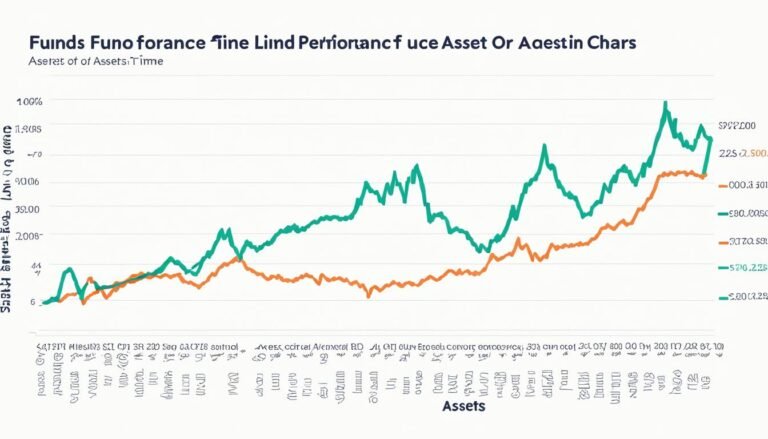High-Frequency Trading Insights
As you ponder the intricate web of financial markets, have you ever wondered about the unseen forces shaping trades within milliseconds? High-frequency trading (HFT) holds a key to this clandestine world, where split-second decisions reign supreme.
Uncover the mysteries behind HFT strategies, the impact on market dynamics, and the regulatory challenges that keep this domain on its toes.
Stay tuned to explore the insights that could potentially reshape your understanding of modern-day trading practices.
Key Takeaways
- High-frequency trading enhances market efficiency through rapid information incorporation.
- Market liquidity can be improved with continuous buy and sell orders from HFT.
- HFT plays a pivotal role in quick price discovery by reflecting new information.
- Algorithm complexity increases with AI, shaping the future of high-frequency trading.
Evolution of High-Frequency Trading
Analyzing the historical developments in high-frequency trading reveals a rapid evolution driven by technological advancements and market dynamics. The algorithms development in high-frequency trading has been a key driver of this evolution. Initially, simple algorithms were used for executing trades at high speeds. However, over time, these algorithms have become increasingly complex, incorporating machine learning and artificial intelligence to make split-second trading decisions.
Market surveillance has also played a critical role in shaping the evolution of high-frequency trading. Regulators and exchanges have implemented sophisticated surveillance systems to monitor trading activities and guarantee market integrity. These surveillance systems help detect manipulative practices and guarantee fair trading practices are followed.
As high-frequency trading continues to evolve, the development of more advanced algorithms and improved market surveillance techniques will be paramount. This evolution underscores the importance of staying at the forefront of technology and regulation in the rapidly changing landscape of financial markets.
Impact of HFT on Markets
The impact of High-Frequency Trading (HFT) on markets is a subject of significant interest due to its influence on market liquidity and price efficiency. When considering the effects of HFT, four key aspects come to light:
- Market Efficiency: HFT can enhance market efficiency by increasing the speed at which information is incorporated into prices, leading to more accurate valuations.
- Liquidity Impact: HFT has the potential to improve market liquidity by providing continuous buy and sell orders, making it easier for traders to enter and exit positions.
- Price Discovery: HFT plays a pivotal role in price discovery by quickly reflecting new information in asset prices, aiding in the determination of fair market values.
- Market Manipulation: There are concerns that HFT could be used for market manipulation through practices like quote stuffing or spoofing, which can distort prices and mislead other market participants.
Understanding these dynamics is essential for regulators and market participants to navigate the opportunities and challenges presented by the growing presence of HFT in today's financial markets.
Strategies for HFT Success
Considering the impact of High-Frequency Trading (HFT) on markets, understanding effective strategies for HFT success is paramount in traversing the evolving landscape of financial markets. To excel in the domain of HFT, two key factors play an important role: quantitative modeling and execution speed.
| Strategies for HFT Success | |
|---|---|
| Quantitative Modeling | Execution Speed |
| Utilize intricate algorithms | Reduce latency |
| Incorporate market data | Optimize infrastructure |
| Implement risk management | Leverage colocation services |
| Adapt to market conditions | Utilize direct market access |
Quantitative modeling involves developing complex algorithms that can swiftly analyze vast amounts of data to identify profitable trading opportunities. Concurrently, execution speed is vital, as reducing latency ensures timely order execution, thereby capitalizing on market inefficiencies. To succeed in HFT, mastering both quantitative modeling and execution speed is essential for sailing through the competitive landscape of high-speed trading.
Risks Associated With High-Frequency Trading
High-Frequency Trading poses inherent risks that demand meticulous risk management and swift decision-making to navigate the volatile landscape of financial markets. When engaging in high-frequency trading, it's important to be aware of the risks involved to make informed decisions. Here are some key risks associated with high-frequency trading:
- Market Volatility: High-frequency trading strategies can amplify market volatility due to the rapid pace at which orders are executed. Sudden price fluctuations can lead to substantial losses if not managed effectively.
- Liquidity Risks: In times of high market volatility, liquidity can dry up quickly, making it challenging to enter or exit positions at desired prices. This lack of liquidity can exacerbate losses for high-frequency traders.
- Technological Glitches: The reliance on complex algorithms and high-speed technology exposes high-frequency traders to the risk of technical failures or glitches, which can result in significant financial losses.
- Regulatory Changes: High-frequency trading is subject to regulatory scrutiny, and changes in regulations can impact the profitability and operations of high-frequency trading firms. Staying informed about regulatory developments is essential to mitigate this risk.
Regulatory Landscape for HFT
When considering the regulatory landscape for high-frequency trading (HFT), it's vital to analyze HFT compliance requirements and the impact of regulations on market dynamics.
Understanding how these regulations shape the behavior of market participants and the overall market structure is essential for evaluating the effectiveness of oversight measures.
HFT Compliance Requirements
Exploring the regulatory landscape for High-Frequency Trading (HFT) requires a deep understanding of the compliance requirements in place. To navigate this landscape effectively, consider the following key points:
- Compliance Challenges: HFT firms face stringent regulatory requirements, necessitating robust compliance mechanisms.
- Automation Solutions: Implementing automated systems can streamline compliance processes and enhance accuracy.
- Risk Management: Prioritize risk assessment and mitigation strategies to guarantee HFT activities align with regulatory standards.
- Audit Trails: Maintaining detailed audit trails is essential for demonstrating compliance and responding to regulatory inquiries promptly.
Impact of Regulations
Exploring the regulatory landscape for High-Frequency Trading (HFT) demands a keen understanding of the significant impact regulations have on operational strategies and compliance frameworks. Regulatory challenges in the HFT space stem from the need to balance market integrity with fostering innovation and liquidity.
Market dynamics play a vital role in shaping these regulations, with authorities constantly adapting to guarantee fair and orderly markets. Compliance issues arise due to the rapid nature of HFT transactions, requiring robust monitoring and reporting mechanisms.
Industry trends indicate a shift towards more stringent regulatory oversight to prevent market abuse and protect investors. Staying abreast of evolving regulations and proactively adjusting operational procedures are essential for HFT firms to navigate the complex regulatory landscape successfully.
Future Trends in HFT
As you look ahead to the future of high-frequency trading (HFT), consider the significant impact of technology advancements on trading strategies.
Changes in the regulatory landscape are shaping the environment in which HFT operates, influencing market dynamics and risk management practices.
Additionally, the ongoing innovation in data analytics is expected to play a pivotal role in enhancing trading performance and decision-making processes.
HFT Technology Advancements
In the ever-evolving landscape of high-frequency trading (HFT), technological advancements continue to shape the future trends in this sector. When considering HFT technology advancements, four key areas stand out:
- Algorithmic Enhancements: Constantly improving algorithms are vital for HFT success, enabling firms to capitalize on market inefficiencies swiftly and effectively, thereby enhancing market liquidity.
- Speed Improvements: The quest for faster execution speeds remains a top priority in HFT, with firms investing heavily in cutting-edge technologies to reduce latency and gain a competitive edge in the market.
- Risk Management: As trading speeds escalate, robust risk management systems are essential to safeguard against potential market disruptions and guarantee stability in high-frequency trading operations.
- Efficiency Through Automation: Automation plays a significant role in HFT, streamlining processes, reducing manual errors, and improving overall operational efficiency.
Regulatory Landscape Changes
With the rapid evolution of high-frequency trading technology, upcoming shifts in regulatory frameworks are poised to greatly impact the future landscape of this sector.
Compliance challenges are becoming more complex as regulators seek to adapt to the fast-paced nature of high-frequency trading. Stricter rules around risk management, algorithmic trading controls, and transparency requirements are being implemented to guarantee market stability and investor protection.
Market surveillance is also a key focus area for regulators to detect and prevent market abuse, manipulation, and unfair trading practices.
As regulatory bodies continue to refine and enforce these changes, market participants in the high-frequency trading space will need to stay agile and proactive in adhering to evolving compliance standards to navigate the shifting regulatory landscape successfully.
Data Analytics Innovation
Quantifying the impact of data analytics on high-frequency trading reveals emerging trends shaping the future landscape of this technological domain. In this dynamic environment, predictive analytics and machine learning are revolutionizing how trading decisions are made.
Here are four key trends to watch out for:
- Enhanced Trading Strategies: Utilizing predictive analytics to develop more accurate and efficient trading algorithms.
- Real-Time Data Processing: Leveraging machine learning to process vast amounts of data in real-time for rapid decision-making.
- Risk Management Improvements: Implementing predictive analytics to identify and mitigate potential risks proactively.
- Market Prediction Models: Developing sophisticated machine learning models to forecast market trends and optimize trading outcomes.
Stay ahead by embracing these data analytics innovations in high-frequency trading.
Conclusion
As you navigate the fast-paced world of high-frequency trading, remember that every millisecond counts. Just like a skilled archer aiming for a bullseye, precision and speed are key to success in this competitive field.
Stay vigilant, adapt to market changes, and always be prepared to seize opportunities in the blink of an eye. The future of HFT is unpredictable, but with the right strategies and mindset, you can aim for the target and hit your mark.







